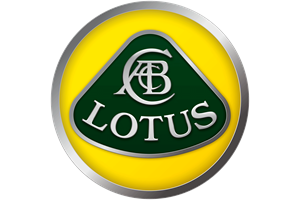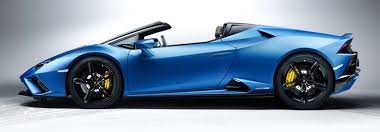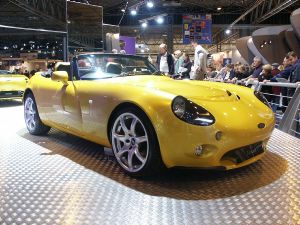


This edition of the Lotus Exige 380 3.5 V6 Roadster is the 6 speed / Manual version and was first brought out in 2017. This was at around the same time as the introduction of the 2018 Bugatti Chiron Sport 8.0L W16 Quad Turbo and the 2018 Bugatti Divo 8.0L W16 64 Valve Turbo.This particular Lotus Exige has a 3456cc Supercharged Petrol powerplant with 6 cylinders in a V formation.
The Exige shares its Petrol V6 engine configuration with the likes of the 2014 Radical RXC 3.5 V6 Twin Turbo and the 2015 Radical RXC Turbo 500 3.5 V6. If you're looking for other fast cars which share the Exige's Rear Wheel Drive, Targa combination then how about the 1982 Fiat X1/9 1.5 8V or the 1965 Aston-Martin DB6 1965.
Weighing in at 1103 kgs (2431 lbs) this makes the Lotus Exige 380 3.5 V6 Roadster in the same weight category as the 2020 Lotus Exige Cup 430 3.5 V6 or the give or take 50kg.
![Chevrolet Corvette E-Ray 6.2 V8 Petrol Hybrid C8 - [2024] image Chevrolet Corvette E-Ray 6.2 V8 Petrol Hybrid C8 - [2024] image](/editionimages/2391.jpg)
The Lotus Exige shares the same bhp with the 2024 Chevrolet Corvette E-Ray 6.2 V8 Petrol Hybrid C8 (369 bhp)
In terms of power the 3456cc 24V V6 engine produces 375 bhp (279 kW) @ 6700 rpm similar to the 2024 Chevrolet Corvette E-Ray 6.2 V8 Petrol Hybrid C8 (369 bhp) or the 2023 Lotus Emira First Edition i4 2.0 Turbo (360 bhp).
The Supercharged V6 throws out 302 lb-ft (409.4 Nm) @ 5000 rpm placing it with cars of similar torque performance figures such as the 2023 Toyota Corolla GR Morizo Edition 1.6 Turbo (295 lb-ft) or the 2023 Porsche Cayenne E-Hybrid 3.0 V6 Turbo (310 lb-ft).
If one combines the weight with power or torque performance for the Lotus Exige you can get a better idea of it's real world performance.
![Audi R8 Performance 5.2 V10 - [2020] image Audi R8 Performance 5.2 V10 - [2020] image](/editionimages/2021.jpg)
The 2020 Audi R8 Performance 5.2 V10 (364.8 bhp per ton) has similar Bhp Per Ton stats as the Lotus Exige.
The Lotus Exige has a Power to weight ratio of 339.9 bhp per ton and 273.7 lb-ft per ton. Bhp Per Ton figures of the 2017 Exige competing with the 2020 Audi R8 Performance 5.2 V10 (364.8 bhp per ton) or the 2011 Ferrari FF 6.3L V12 (363.1 bhp per ton).
If you agree with the late great Carroll Shelby then arguably an even better indicator of potential performance, Torque. Use weight as well and you end up with - Torque per ton, with the Lotus Exige generating around 273.7 lb-ft per ton. If you're curious as to what other cars have as much torque to weight then look no further than the 1968 Ford Mustang 428 Cobra Jet 7.0 V8 (298.3 lb-ft per ton) or the 2015 Mercedes C Class 63 S AMG (298.2 lb-ft per ton).
With a 0-60mph time of 3.50 secs or a 0-100km/h (0-62mph) of 3.6 secs, this made the Lotus Exige 380 3.5 V6 Roadster as fast as the 2023 Chevrolet Camaro ZL1 6.2 V8 Convertible (3.50 secs) the 2023 Aston-Martin Valour 5.2 V12 Twin Turbo (3.50 secs) the 2022 Chevrolet Camaro SS 6.2 V8 Auto (3.50 secs) the or the 2022 Chevrolet Camaro SS 6.2 V8 (3.50 secs). This Lotus Exige 380 3.5 V6 Roadster is also faster than the 2023 BMW i7 M70 xDrive G70 (3.60 secs) the 2020 Audi TT RS 2.0 Turbo (3.60 secs) the 2020 Iso Rivolta GTZ 6.2 V8 Supercharged (3.60 secs) the and the 2019 BMW X6 M Competition 4.4 V8 Turbo F85 (3.60 secs).
When talking about the performance of the Lotus Exige on the drag strip it can reach a quarter mile in an estimated 11.77 secs @ 116.2 mph. Similar performance down the quarter mile can be found with the the 2014 Volvo V60 3.0 Turbo Polestar (11.72 secs), the 2017 BMW 4 Series M4 Convertible F83 (11.73 secs), and the 2009 Porsche Cayman S 3.4 (11.74 secs).
Modern performance cars are often artificially restricted to 155mph. The 2017 version of the Lotus Exige 380 3.5 V6 Roadster has a maximum speed of 178mph.
If maxing out your car on the AutoBahn is your thing and you're wondering what's faster than the 2017 Lotus Exige 380 3.5 V6 Roadster then how about the 2014 Porsche 911 Carrera 4 GTS (189 mph), the 2014 Mercedes GT AMG (189 mph), or the 2014 Chevrolet Corvette Z06 6.2 V8 C7 (189 mph).









BMW 3 Series 335d xDrive LCI Touring F31
Engine: Turbo Diesel | 2993cc 24v St6
Top Speed: 155 mph
0-60mph: 4.70 seconds

SSC Aero SC 8T 6.3L
Engine: Supercharged Petrol | 6257cc 16v V8
Top Speed: 400.7 kph
0-100kph: 3.0 seconds



















